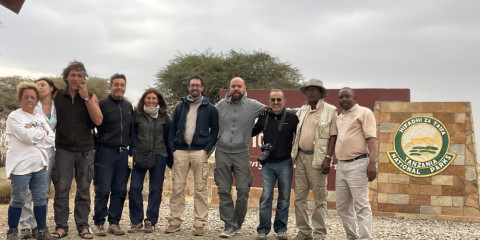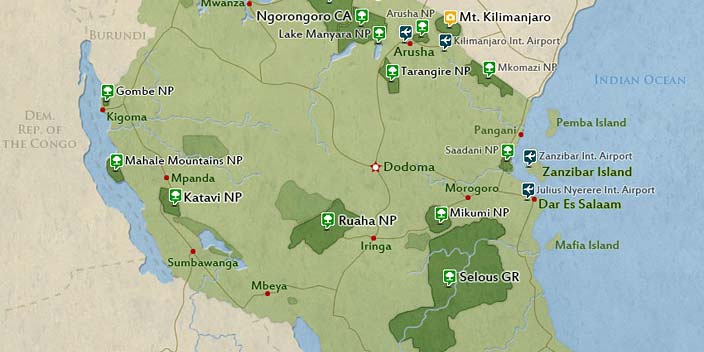
$550 pp (USD)
2 travelers on Start dateArrival
Arrival

Day 1
Arrive at Arusha airport to Tarangire National Park
Arrive at Arusha airport to Tarangire National Park
You will be picked up from Kilimanjaro Airport and will be taken to Tarangire National Park. The Tarangire National Park with its endless tree savannah and seasonal marshes is home to the largest elephant herds in the North of Tanzania; with over 4000 at the last count, it is a number hard to beat. In the national park, you will also be able to watch giraffes, buffalos, lions, zebras, gnus, and different types of antelopes and gazelles. Upon your arrival at the park, your driver will open the roof of the vehicle and the extensive wildlife watch can begin. After having lunch at a picnic spot, you will have more time in the afternoon to see more of this amazing and beautiful park. Late in the afternoon, you will leave Tarangire National Park and you will stay for the night at the public campsite. Lunch, dinner.
- Main Destination:
- Tarangire National Park
- Accommodation:
- Budget camping
- Meals & Drinks:

Day 2
Tarangire National Park to Ngorongoro Crater
Tarangire National Park to Ngorongoro Crater
After having an early breakfast, we depart for Ngorongoro crater and arrive in time for lunch. Ngorongoro's caldera shelters the most beautiful wildlife haven on earth. The rich pasture and permanent water of the Crater floor supports a resident population of some 20,000 to 25,000 large mammals. They are not confined by the Crater walls, and can leave freely; they stay because conditions are favorable. Since most of the Crater floor is grassland, grazing animals predominate such as gnu, zebra, gazelles, buffalo, eland, and kongoni (Coke's hartebeest) and warthogs. The swamp and forest provide additional resources for hippos, giant-tusked elephants, waterbucks, bushbucks, baboons, vervets, and some of Tanzania's last remaining black rhinos. The steep inner slopes provide a habitat for dik-diks and the rare mountain reedbuck. All these animals in turn support large predators such as Lion and Leopard. Late evening return to the campsite for dinner and overnight.
- Main Destination:
- Ngorongoro Crater
- Accommodation:
- Budget camping
- Meals & Drinks:

Day 3
Lake Manyara National Park to Arusha City
Lake Manyara National Park to Arusha City
Early risers will be taken of the sun rising over Lake Manyara park. After breakfast, you will drive to Lake Manyara National Park, a small but diverse park 120km west of Arusha. The park’s namesake is a shallow and alkaline lake. It covers a large area of the park, flooding and drying with the seasons, and is home to thousands of flamingos and over 500 other bird species. On your exploration of the park you will see monkeys, giraffes, zebras, wildebeests, buffaloes, elephants, and with some luck, lions lounging in the trees. In the afternoon, you will return to Arusha, or transfer to the Airport where your safari ends. Breakfast, lunch.
- Main Destination:
- Ngorongoro Crater
- Accommodation:
- No accommodation (End of tour)
- Meals & Drinks:
















